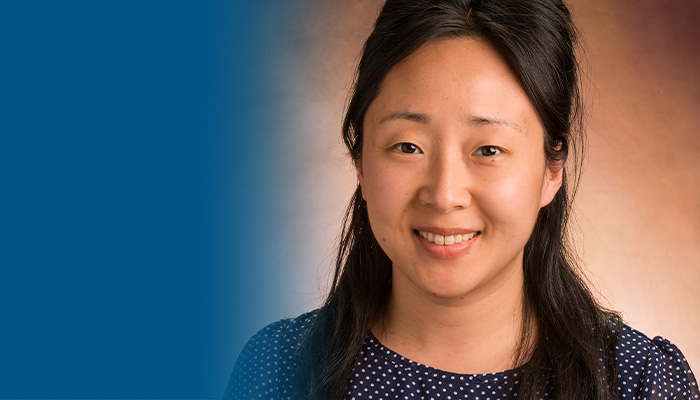HOW CAN WE HELP YOU? Call 1-800-TRY-CHOP
In This Section
Faculty Spotlight: Ultrasound and Microbubble Imaging with Misun Hwang, MD

Misun Hwang, MD
Editor's Note: Welcome to our monthly Faculty Spotlight series, in which we sit down with faculty members at Children's Hospital of Philadelphia Research Institute to learn more about their research and roles. Through these spotlights, our readers meet the diverse, dedicated, and distinctive individuals who lead our research community in our mission to improve children's health. It's a new round of spotlights, and this time, we're asking our featured scientists about how they encourage diversity, equity, and inclusion within their labs. In this Q&A, we meet Misun Hwang, MD, attending radiologist in the Department of Radiology at CHOP. Stay tuned for more from our Faculty Spotlight series throughout the year.
How long have you been at CHOP, and can you tell us a little about your research specialty?
I graduated from the pediatric radiology fellowship at CHOP in 2016 and I started here as assistant professor of Radiology in 2018.
My translational ultrasound imaging research focuses on using ultrasound as a means to both diagnose and treat pediatric diseases. In particular, ultrasound contrast agents called microbubbles can be used to help resolve microvessels in the body at less than 10 microns in resolution, or, if used in conjunction with ultrasound, can help deliver therapeutic agents in a targeted manner.
Why did you choose to focus on that specialty?
Pediatric radiology is such a rewarding field personally, as it impacts children and their health. My love of ultrasound in particular stems from the opportunity to interact with patients and their families.
Can you tell us about a current research project that you are excited about?
I am working on using ultrasound and microbubbles for super resolution imaging of cerebral microvasculature for diagnostics in both preclinical and clinical settings. I am also using ultrasound as a means to modulate blood brain barriers or release therapeutic agents from microbubbles to treat brain injury. Also under exploration is the use of microbubbles as a means of gene product delivery and therapy.
What are the long-term research questions you hope to answer?
I hope that advances in ultrasound and super resolution imaging can translate to precision diagnostics in patients. In addition, the future goal is to translate ultrasound-based therapeutics to treat fetal and pediatric diseases. Meanwhile, my laboratory is also interested in uncovering novel mechanisms along our journey to achieve the aforementioned goals, such that therapeutic targets can be developed.
How do you support diversity, equity, and inclusion among your research team?
My laboratory is a team of people from diverse ethnic, religious, and cultural backgrounds. I am originally from South Korea but raised predominantly in the United States, while Mrigendra Karmacharya, my research scientist, is from Nepal but received his PhD in South Korea. I love taking Jiu-jitsu classes when I'm off work, while my PhD student, Sophie Haddad, who is from Lebanon, likes boxing and horseback riding in her spare time. Laith Sultan, our research scientist, is originally from Iraq and Muslim by religious background. Zeng Zhang is a co-mentored graduating PhD student originally from China. We blend together to make a perfect team. There should be no boundaries when it comes to forming a team to tackle a scientific or medical problem. Diversity, not only in backgrounds, but also thought processes, contributes to team success.


